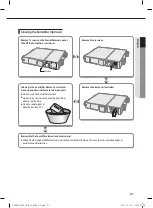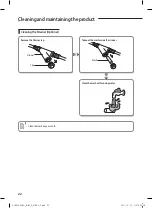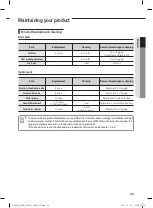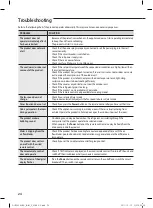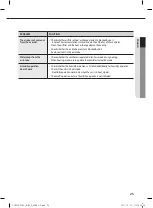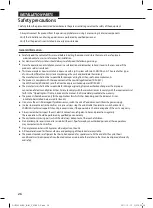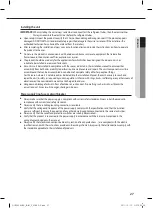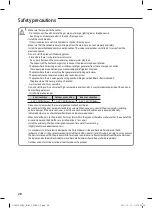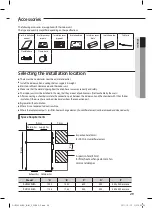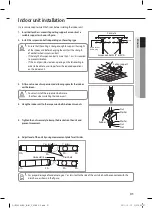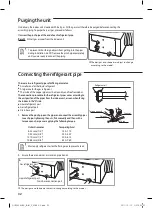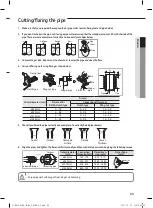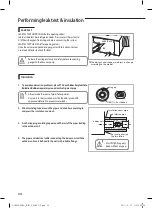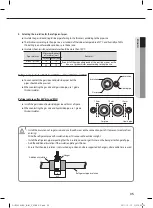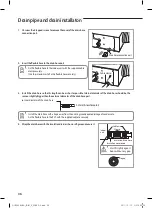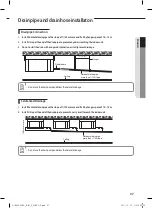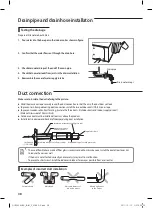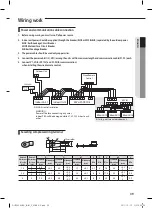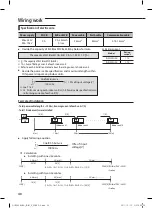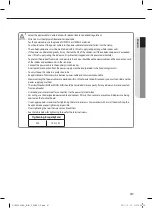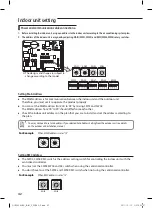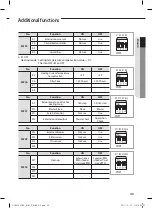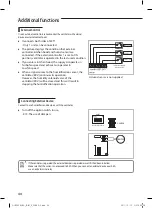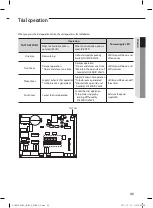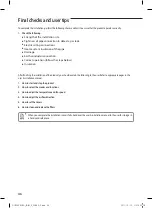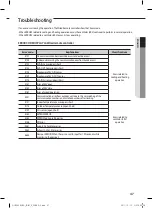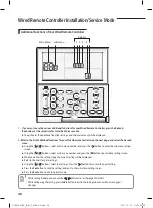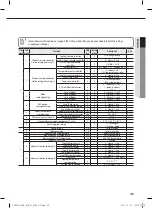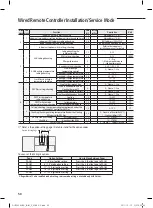
35
ENGLISH
• Install the insulation not to get wider and use the adhesives on the connection part of it to prevent moisture from
entering.
• Wind the refrigerant pipe with insulation tape if it is exposed to outside sunlight.
• Install the refrigerant pipe respecting that the insulation does not get thinner on the bent part or hanger of pipe.
• Add the additional insulation if the insulation plate gets thinner.
• Ensure that the pipe insulation is not crushed eg: on bends, where supported by hangers, where cable ties are used.
Gas pipe
Liquid pipe
Insulation
Insulation
Gas pipe
10mm
Liquid pipe
10mm
10mm
Pipe size (mm)
Minimum thickness
of insulator (mm)
Remarks
PE foam EPDM foam
Ø6.35~Ø15.88
13
10
If you install the pipe underground, at the seaside, a spa or on the
lake, use 1 grade thicker one according to the pipe size.
-
25
19
5. Selecting the insulation for the refrigerant pipes.
Insulate the gas side and liquid side pipe referring to the thickness according to the pipe size.
The thickness according to the pipe size is a standard of the indoor temperature of 27°C and humidity of 80%.
If installing in an unfavorable conditions, use thicker one.
Insulator’s heat-resistance temperature should be more than 120°C.
Refrigerant pipe before EEV kit and MCU or without EEV kit and MCU
You can contact the gas side and liquid side pipes but the
pipes should not be pressed.
When contacting the gas side and gas side pipe, use 1 grade
thicker insulator.
Refrigerant pipe after EEV kit and MCU
Install the gas side and liquid side pipes, leave 10mm of space.
When contacting the gas side and liquid side pipe, use 1 grade
thicker insulator.
Additional insulation
Hanger
Refrigerant pipe insulation
a×3
a
RHF050KHEA_IB,IM_E_32885-3.indd 35
2011-10-12 오후 5:30:34

